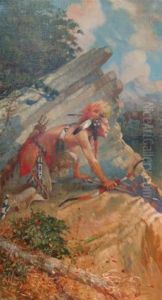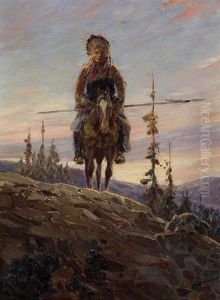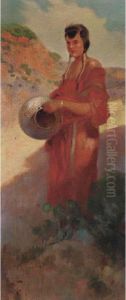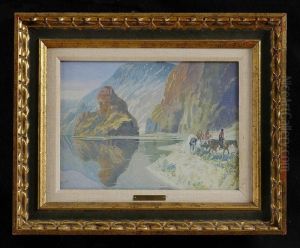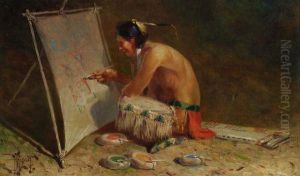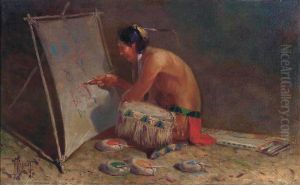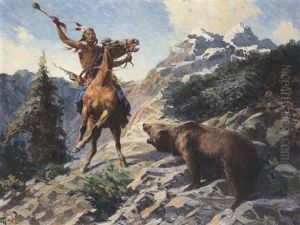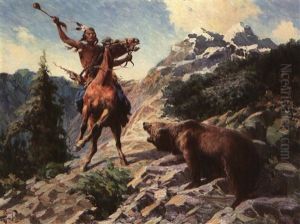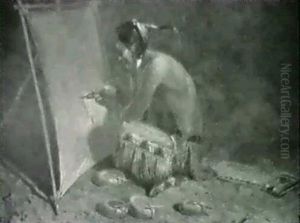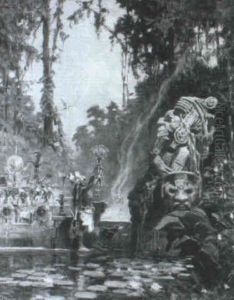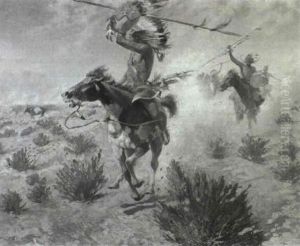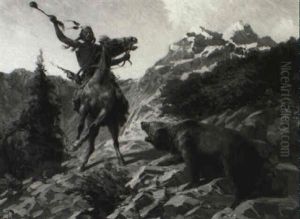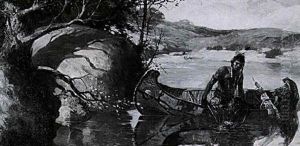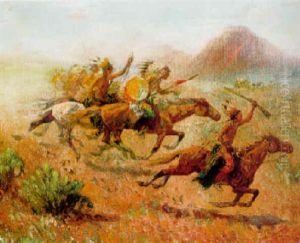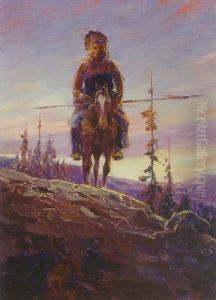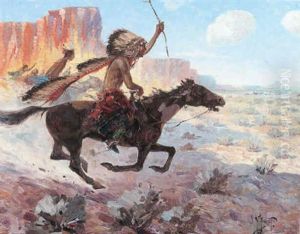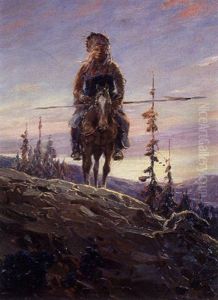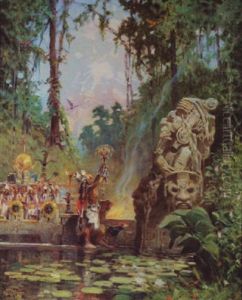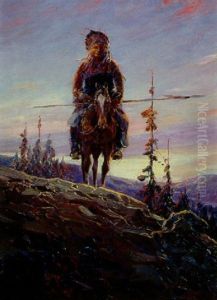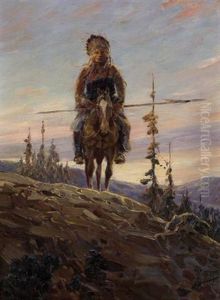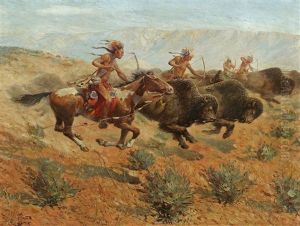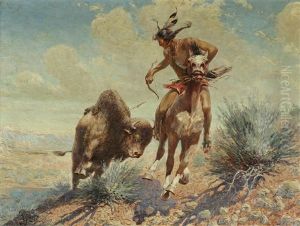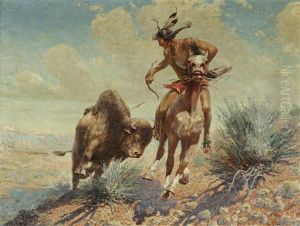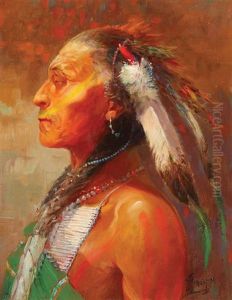Herbert M. Herget Paintings
Herbert Meyer Herget was an American artist born in 1885, known primarily for his detailed and vivid illustrations of natural history, especially prehistoric life and Native American cultures. His work spans a crucial period in American illustration, where the focus on accuracy and realism was becoming increasingly important, particularly in educational contexts.
Herget's early life and education fostered his interest in art and history. Growing up in a time when America was fascinated with its own past and the mysteries of the world before recorded history, he was influenced by the burgeoning field of archaeology and the popularization of paleontology. This interest is reflected throughout his career, as he became known for his ability to bring extinct creatures and ancient cultures to life on the page with a remarkable level of detail and scientific accuracy.
Throughout his career, Herget contributed to numerous publications and projects. One of his most significant affiliations was with the National Geographic Society, for which he produced a series of illustrations. These works were pivotal in bringing vivid, educational content to a wide audience, making complex scientific concepts accessible and engaging. His illustrations often accompanied articles exploring archaeology, anthropology, and paleontology, helping to visualize the subjects for readers around the world.
Herget's artistic style is characterized by its precision and attention to detail, qualities that made his work not only beautiful but also scientifically valuable. His ability to render the textures of fur, feather, and skin, as well as his keen eye for landscapes, allowed his illustrations to serve as windows into the past. He worked closely with scientists and researchers to ensure that his depictions were as accurate as possible, given the knowledge available at the time.
Herbert M. Herget's legacy is that of a bridge between science and art, a testament to the power of illustration to educate and inspire. His work continues to be appreciated for its artistic merit as well as its contribution to the popular understanding of history and science. He passed away in 1950, leaving behind a body of work that remains relevant for both its aesthetic qualities and its educational value.
